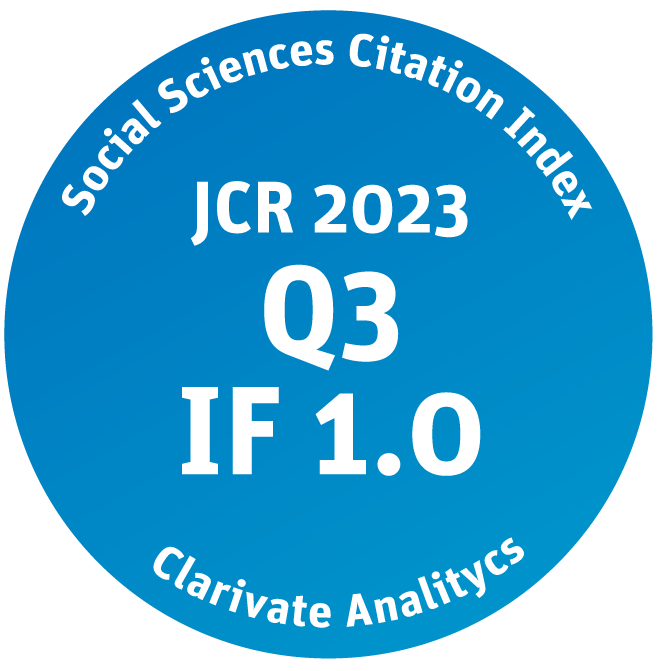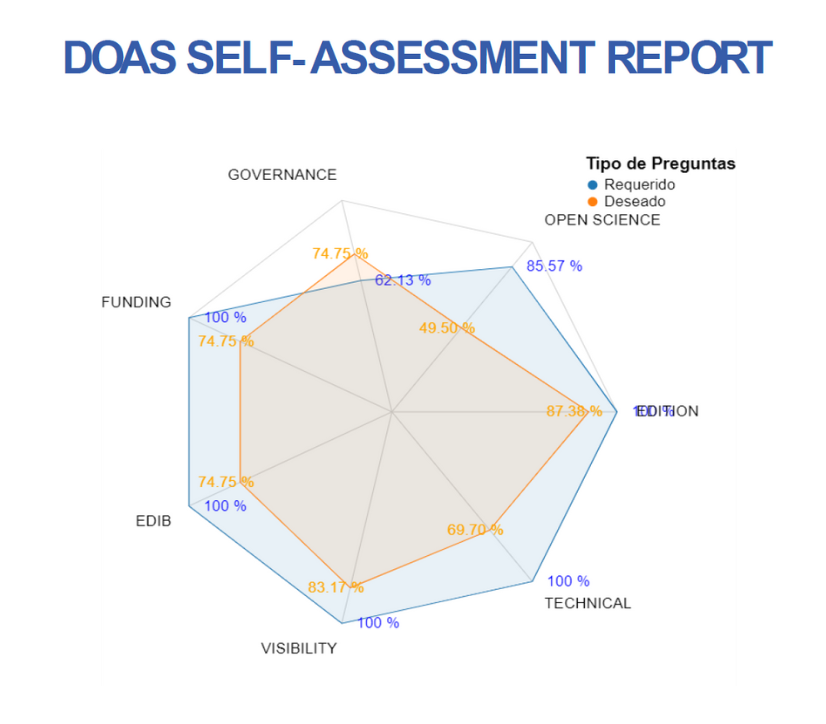Jugar correctamente: validación empírica de la escala Gamertype para el aprendizaje basado en juegos en la educación superior
DOI
10.22550/2174-0909.4056
Abstract
The growing interest in applying gamified designs in higher education is challenged by mixed results in terms of student acceptance. Different players are attracted to games for different reasons and game design elements, and a better understanding of how each learner will connect to different game mechanics provides valuable input for game design and evaluation. In this paper, we present and validate a scale to measure the affinity of each player with different game elements. First, a theoretical review was carried out on three profile classifications and six motivational theoretical models, proposing a taxonomy for twelve player profiles based on three axes: relational, competence and motivational. Then, a pilot test was carried out with 54 subjects, analysing content and comprehension validity through the judgment of six experts and construct validity through an exploratory factorial analysis. Subsequently, with a sample of 1010 subjects, a confirmatory factor analysis was performed. The scale was made up of 30 items, with a Cronbach’s alpha of 0.822; three main components were obtained: dominators, interactors and trackers. The results show the validity of the scale, with high levels of confidence. It provides an understanding of the player’s profile in a playful context, their motivational orientation and their affinity with the specific game design. This can be used to improve the design of gamified experiences in higher education.
Referencias | References
Al-Azawi, R., Al-Faliti, F., & Al-Blushi, M. (2016). Educational gamification vs. game based learning: Comparative study. International Journal of Innovation, Management and Technology, 7 (4), 132-136. https://doi.org/10.18178/ijimt.2016.7.4.659
Bartle, R. (1996). Hearts, clubs, diamonds, spades: Players who suit MUDs. Journal of MUD Research, 1 (1), 19.
Bartle, R. (2005). Virtual worlds: Why people play. Massively Multiplayer Game Development, 2 (1), 3-18.
Chou, Y. K. (2014, September 22). Octalysis: Complete gamification framework. LinkedIn. https://www.linkedin.com/pulse/20140922202253-5757314-octalysis-complete-gamification-framework/
Deci, E. L., & Ryan, R. M. (1985). Intrinsic motivation and self-determination in human behavior. Springer. https://doi.org/10.1007/978-1-4899-2271-7
Espinoza, E. E., & Toscano, D. T. (2015). Metodología de investigación educativa y técnica [Educational research methodology and technique]. UTMach.
Ferro, L. S., Walz, S. P., & Greuter, S. (2013). Towards personalised, gamified systems: An investigation into game design, personality and player typologies. In Association for Computing Machinery (Ed.), IE 2013. Proceedings of the 9th Australasian Conference on Interactive Entertainment: Matters of Life and Death. AMC. https://doi.org/10.1145/2513002.2513024
Fullerton, T. (2008). Game design workshop. A playcentric approach to creating innovative games. CRC Press. http://dx.doi.org/10.1201/b13172-10
Hamari, J., & Tuunanen, J. (2014). Player types: a meta-synthesis. Transactions of the Digital Games Research Association, 1 (2), 29-53. http://dx.doi.org/10.26503/todigra.v1i2.13
Hu, L., & Bentler, P.M. (1999). Cutoff for fit indexes in covariance structure: Conventional versus new alternatives. Structural Equation Modeling: A Multidisciplinary Journal, 6 (1), 1-55. http://dx.doi.org/10.1080/10705519909540118
Huta, V., & Waterman, A. S. (2014). Eudaimonia and its distinction from hedonia: Developing a classification and terminology for understanding conceptual and operational definitions. Journal of Happiness Studies, 15 (6), 1425-1456. http://dx.doi.org/10.1007/s10902-013-9485-0
Jia, Y., Xu, B., Karanam, Y., & Voida, S. (2016). Personality-targeted gamification: a survey study on personality traits and motivational affordances. In Association for Computing Machinery (Ed.), Proceedings of the 2016 CHI Conference on Human Factors in Computing Systems (pp. 2001-2013). ACM. https://doi.org/10.1145/2858036.2858515
Johnson, D., Deterding, S., Kuhn, K.-A., Staneva, A., Stoyanov, S., & Hides, L. (2016). Gamification for health and wellbeing: A systematic review of the literature. Internet Interventions, 6, 89-106. https://doi.org/10.1016/j.in-vent.2016.10.002
Kapp, K. M. (2012). The gamification of learning and instruction: Game-based methods and strategies for training and education. John Wiley & Sons.
Krath, J., Schürmann, L., & Von Korflesch, H. F. (2021). Revealing the theoretical basis of gamification: A systematic review and analysis of theory in research on gamification, serious games and game-based learning. Computers in Human Behavior, 125, 106963. https://doi.org/10.1016/j.chb.2021.106963
Marczewski, A. (2015). Gamification: Even ninja monkeys like to play. Unicorn edition. Gamified UK.
Martínez-Sanz, J. M., Urdampilleta, A., Guerrero, J., & Barrios, V. (2011). El somatotipo-morfología en los deportistas. ¿Cómo se calcula?
¿Cuáles son las referencias internacionales para comparar con nuestros deportistas? [The somatotype-morphology in athletes: How is it calculated? What are the international references for comparison with our athletes?]. Lecturas: Educación Física y Deportes, 16 (159), 4. https://cutt.ly/YXpnpkz
Mora, A., Riera, D., González, C., & Arnedo-Moreno, J. (2017). Gamification: A systematic review of design frameworks. Journal of Computing in Higher Education, 29 (3), 516-548. http://dx.doi.org/10.1007/s12528-017-9150-4
Nacke, L. E., Bateman, C., & Mandryk, R. L. (2013). BrainHex: A neurobiological gamer typology survey. Entertainment Computing, 5 (1), 55-62. https://doi.org/10.1016/j.entcom.2013.06.002
Prieto, J. M. (2022). Revisión sistemática sobre la evaluación de propuestas de gamificación en siete disciplinas educativas [Sistematic review about evaluation of gamification in seven educational disciplines]. Teoría de la Educación. Revista Interuniversitaria, 34 (1), 189-214. https://doi.org/10.14201/teri.27153
Ryan, R. M., & Deci, E. L., & Vansteenkiste, M. (2016). Autonomy and autonomy disturbances in self-development and psychopathology: Research on motivation, attachment, and clinical process. In D. Cicchetti (Ed.), Developmental psychopathology: Theory and method (pp. 385-438). John Wiley & Sons. https://doi.org/10.1002/9781119125556.devpsy109
Ryan, R., & Deci, E. L. (2000). Self-determination theory and the facilitation of intrinsic motivation, social development, and well-being. American Psychologist, 55 (1), 68-78. https://doi.org/10.1037/0003-066X.55.1.68
Schuurman, D., De Moor, K., De Marez, L., & Van Looy, J. (2008). Fanboys, competers, escapists and time-killers: A typology based on gamers’ motivations for playing video games. In Association for Computing Machinery (Ed.), Proceedings of the 3rd International Conference on Digital Interactive Media in Entertainment and Arts (pp. 46-50). ACM. https://doi.org/10.1145/1413634.1413647
Sezgin, S. (2020). Digital player typologies in gamification and game-based learning approaches: A meta-synthesis. Bartın University Journal of Faculty of Education, 9 (1), 49-68. https://doi.org/10.14686/buefad.610524
Tondello, G. F., Wehbe, R. R., Diamond, L., Busch, M., Marczewski, A., & Nacke, L. E. (2016). The gamification user types Hexad scale. In Association for Computing Machinery (Ed.), Proceedings of the 2016 Annual Symposium On Computer-Human Interaction in Play (pp. 229-243). ACM. http://dx.doi.org/10.1145/2967934.2968082
Tondello, G. F., Mora, A., Marczewski, A., & Nacke, L. E. (2019). Empirical validation of the gamification user types Hexad scale in English and Spanish. International Journal of Human-Computer Studies, 127, 95-111. https://doi.org/10.1016/j.ijhcs.2018.10.002
Vahlo, J., Kaakinen, J. K., Holm, S. K., & Koponen, A. (2017). Digital game dynamics preferences and player types. Journal of Computer-Mediated Communication, 22 (2), 88-103. https://doi.org/10.1111/jcc4.12181
Valderrama, B. (2018). La rueda de motivos: hacia una tabla periódica de la motivación humana [The wheel of motives: Toward a periodic table of human motivation]. Papeles del Psicólogo, 39 (1), 60-70. https://doi.org/10.23923/pap.psicol2018.2855
Yee, N. (2015). Gamer motivation model: Overview and descriptions. Quantic Foundry. http://quanticfoundry.com/2015/12/15/handy-reference
Yee, N., Ducheneaut, N., & Nelson, L. (2012). Online gaming motivations scale: Development and validation. In Association for Computing Machinery (Ed.), Proceedings of the SIGCHI Conference on Human Factors in Computing Systems (pp. 2803-2806). ACM. https://doi.org/10.1145/2207676.2208681
Zahedi, L., Batten, J., Ross, M., Potvin, G., Damas, S., Clarke, P., & Davis, D. (2021). Gamification in education: A mixed-methods study of gender on computer science students’ academic performance and identity development. Journal of Computing in Higher Education, 33 (2), 441-474. https://doi.org/10.1007/s12528-021-09271-5
Citación recomendada | Recommended citation
Prieto-Andreu, J.-M., & Moreno-Ger, P. (2024). Playing it right: Empirical validation of the Gamertype scale for game-based learning in higher education [Jugar correctamente: validación empírica de la escala Gamertype para el aprendizaje basado en juegos en la educación superior]. Revista Española de Pedagogía, 82 (288), 243-270. https://doi.org/10.22550/2174-0909.4056
Licencia Creative Commons | Creative Commons License
Esta obra está bajo una licencia internacional Creative Commons Atribución-NoComercial 4.0.
This work is licensed under a Creative Commons Attribution-NonCommercial 4.0 International License
Palabras clave | Keywords
scale, gamification, profile, player, validation, motivation, game-based learning, games, design, education, confirmatory analysis, exploratory analysis, factor analysis








